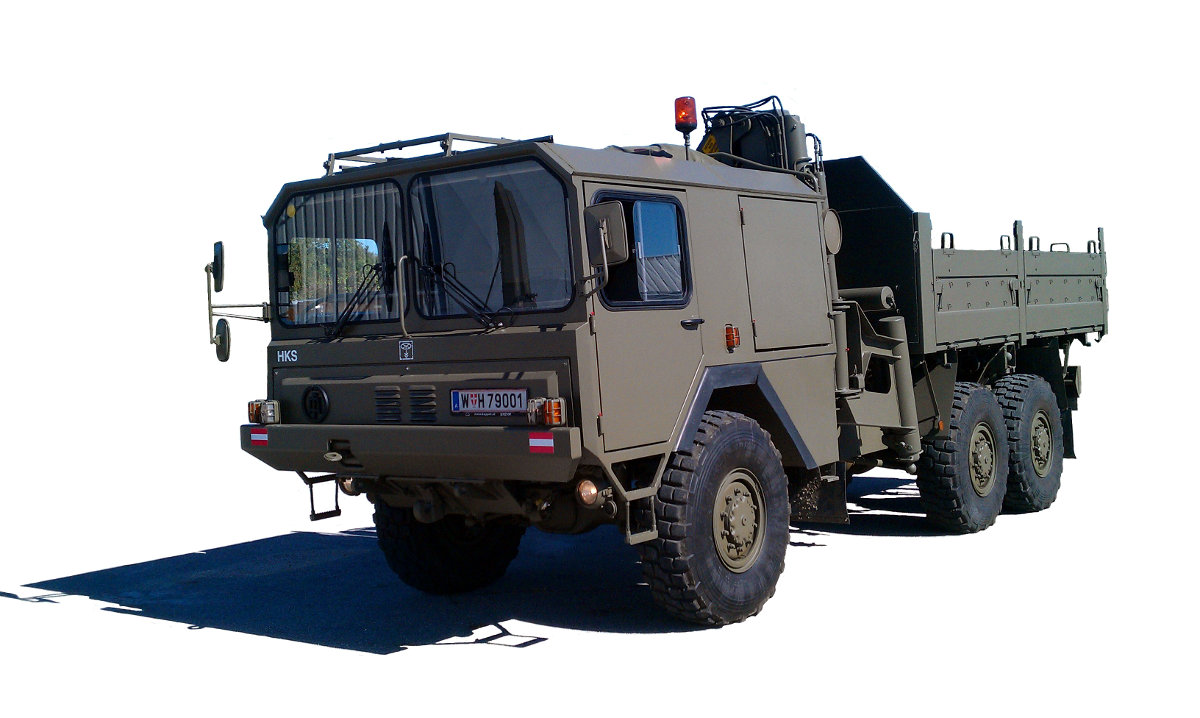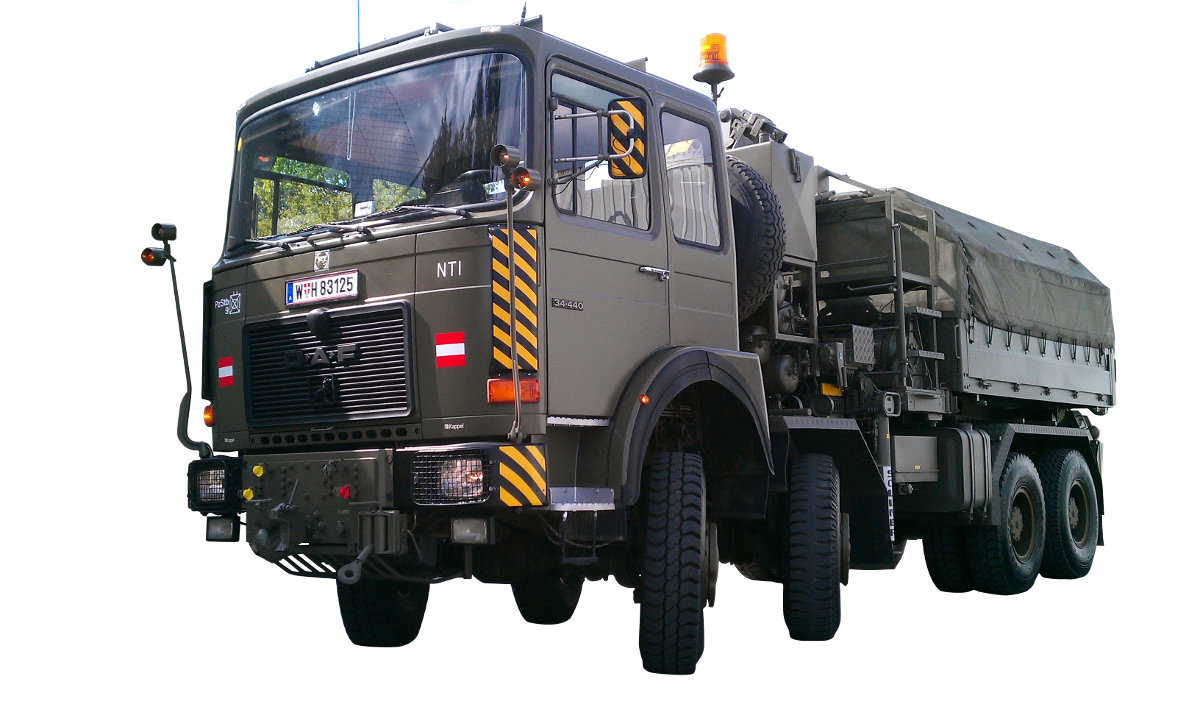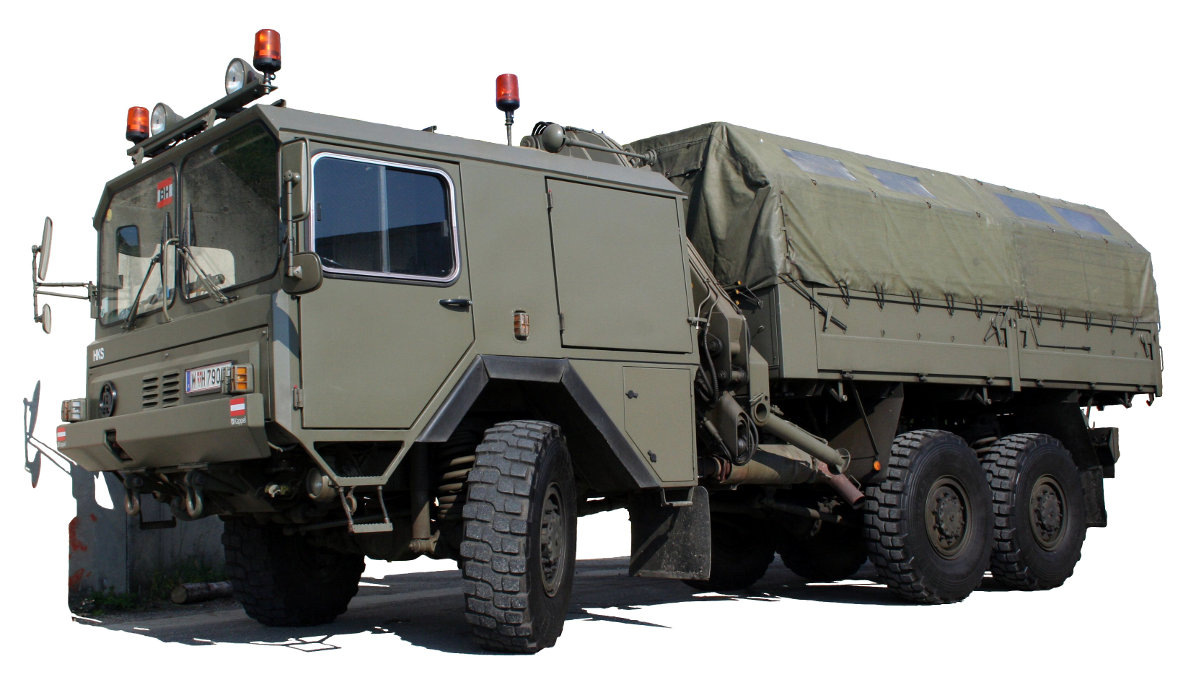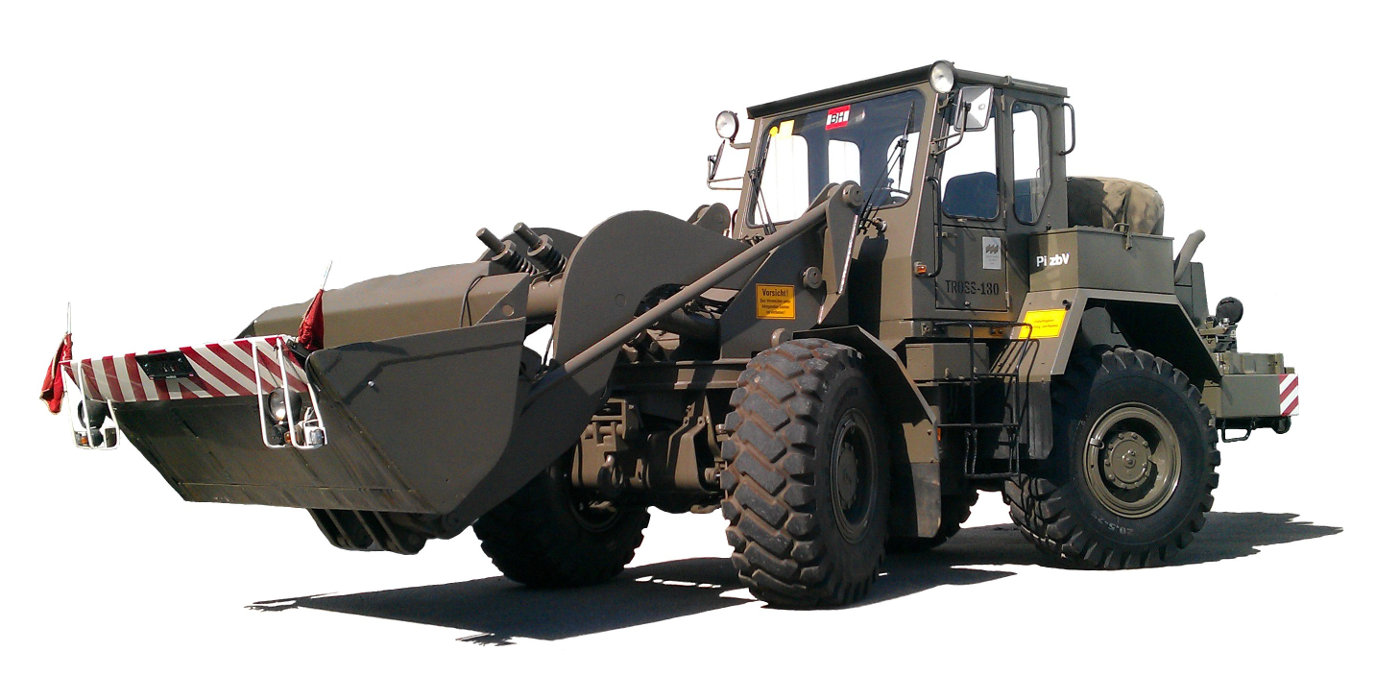High-Mobility Heavy Truck, D, 10 t ÖAF w/ Winch and Loading Crane PK 17000 N (ÖAF gl sLKW 20.320 G3)
For the general background on the development of the ÖAF gl sLKW 20.320 see the section on the G1 model. The G3 version with the heavy 17 mt hydraulic crane was mostly assigned to the Engineer Battalions. When looking at the crane mounted behind the cab, it’s obvious that the massive construction represented the state-of-the-art in hydraulic cranes in the early 1970s. To be able to store the crane behind the cab when not in use, its main arm has to be folded in two – an activity that required a lot of effort. As a result, most G3 drivers laid the crane on the loading platform during transit.






